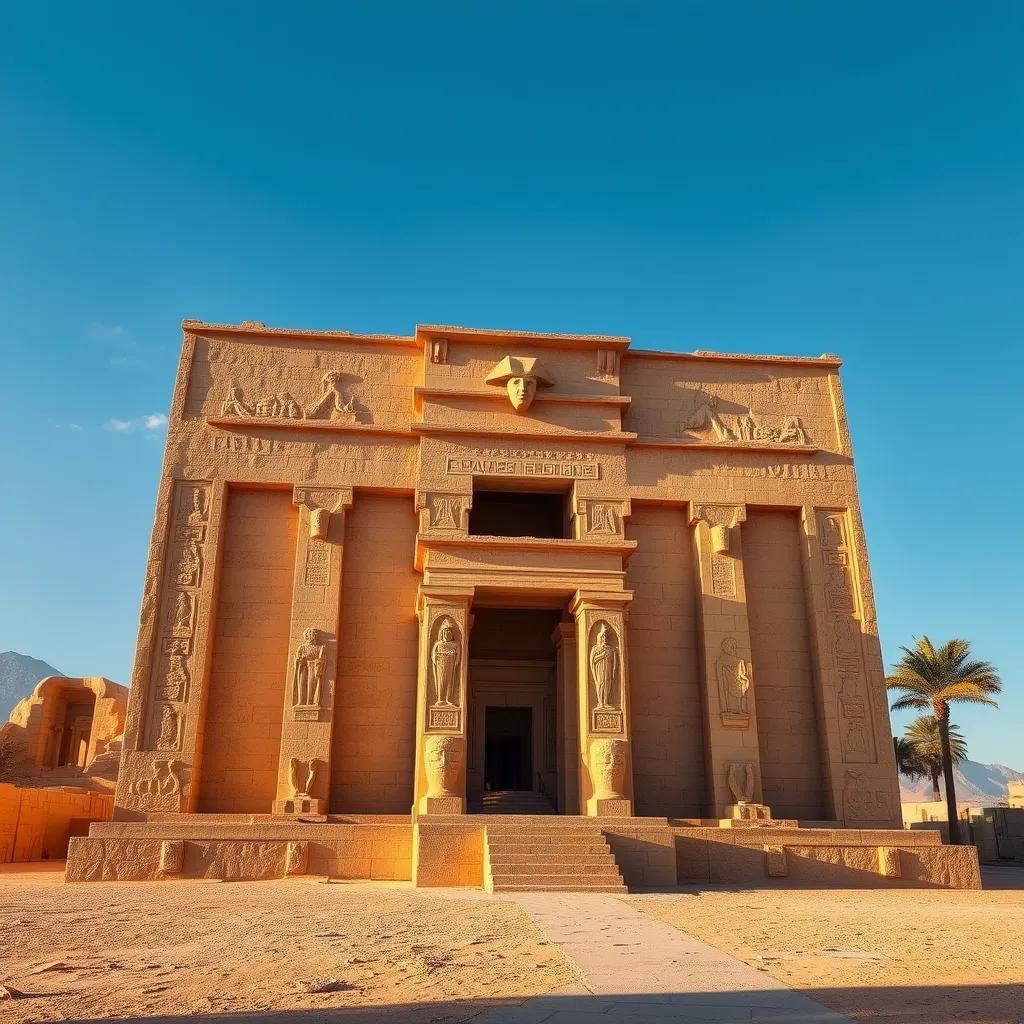The Temple of the Divine Warrior: Exploring the Sekhmet Complex
I. Introduction
The Sekhmet Complex, a remarkable site in ancient Egypt, serves as a testament to the rich tapestry of Egyptian religion and mythology. This complex is dedicated to Sekhmet, the fierce lioness goddess associated with war, healing, and protection. Revered by the ancient Egyptians, Sekhmet embodies the duality of destruction and healing, making her one of the most significant deities in the pantheon.
II. Historical Context
The origins of the Sekhmet Complex trace back to the early dynastic period of ancient Egypt, establishing her as a central figure in Egyptian religion. Sekhmet was worshiped primarily in Memphis, where her cult flourished during the New Kingdom but can be traced through various dynasties. Her worship peaked during the reign of Pharaoh Amenhotep III, who significantly contributed to the construction and expansion of temples dedicated to her.
Throughout the centuries, Sekhmet was celebrated not only as a goddess of warfare but also as a protector of the pharaohs and a healer of the sick. Her fierce nature was invoked in times of conflict, while her healing abilities were sought after during periods of illness and plague.
III. Architectural Features of the Sekhmet Complex
The Sekhmet Complex is a marvel of ancient architecture, showcasing the ingenuity and artistry of Egyptian builders. The temple layout typically features a grand entrance flanked by massive stone statues of Sekhmet, leading into a series of halls and sanctuaries. The design elements include:
- Hypostyle Halls: Large halls filled with columns, often adorned with intricate carvings and hieroglyphs.
- Sanctuaries: Inner sanctums where the goddess was worshiped, usually housing her statue.
- Courtyards: Open spaces for rituals and gatherings, often surrounded by walls adorned with religious imagery.
The materials used in the construction, such as sandstone and granite, were not only durable but also symbolically significant. The craftsmanship reflected the Egyptians’ reverence for their gods, with meticulous attention to detail in every aspect of the temple’s design.
IV. Iconography and Symbolism
The artistic representations of Sekhmet within the complex are rich in symbolism and meaning. Often depicted as a lioness or a woman with a lioness head, Sekhmet’s imagery serves multiple purposes:
- Power and Strength: The lioness symbolizes power, ferocity, and the ability to protect the pharaoh and the land.
- Healing: Many depictions show Sekhmet with a sistrum, a musical instrument used in healing rituals, signifying her role as a goddess of medicine.
- Protection: The fierce nature of Sekhmet represents the protection of the pharaoh and the people from enemies and diseases.
This duality of destruction and healing is a recurring theme in the iconography of Sekhmet, reflecting the complex nature of her worship and the beliefs of the ancient Egyptians.
V. Rituals and Ceremonies
Rituals and ceremonies at the Sekhmet Complex were integral to the worship of the goddess. These practices included:
- Daily Offerings: Priests would present food, incense, and other offerings to Sekhmet to ensure her favor.
- Healing Rituals: Ceremonies aimed at invoking Sekhmet’s healing powers were conducted for those suffering from illnesses.
- Festivals: Major festivals, such as the Feast of Sekhmet, celebrated her attributes and sought to reinforce the protection she offered to the community.
The festivals dedicated to Sekhmet had a significant cultural impact, as they were occasions for the community to come together, celebrate their beliefs, and reinforce social cohesion through shared religious experiences.
VI. Archaeological Discoveries
Excavations at the Sekhmet Complex have yielded remarkable findings that offer insights into ancient Egyptian society and beliefs. Some key discoveries include:
- Statues and Reliefs: Numerous statues of Sekhmet and reliefs depicting rituals have been uncovered, illustrating the goddess’s importance.
- Inscribed Offerings: Artifacts including inscribed offerings reveal the types of tributes made to Sekhmet by worshippers.
- Burial Sites: Evidence of burial sites within the complex indicates that it served not only as a religious center but also as a place of rest for priests and worshippers.
These findings help archaeologists and historians piece together the religious practices, social structures, and daily lives of the ancient Egyptians.
VII. Preservation and Challenges
The current state of the Sekhmet Complex is a concern for archaeologists and conservators. While efforts are underway to preserve this significant site, several challenges exist:
- Environmental Factors: Erosion, flooding, and the impacts of climate change threaten the structural integrity of the complex.
- Human Factors: Tourism and urban development pose risks to the preservation of the site, leading to potential damage from increased foot traffic and construction.
- Funding and Resources: Limited funding for archaeological projects can hinder conservation efforts and ongoing research.
Preservation efforts are crucial to protect the Sekhmet Complex for future generations, ensuring that this cultural heritage can be studied and appreciated.
VIII. Conclusion
The Sekhmet Complex stands as a powerful symbol of ancient Egyptian culture, reflecting the complexity of their beliefs and practices. Its enduring legacy highlights the importance of understanding ancient sites not only as historical relics but also as vital components of contemporary cultural identity and heritage conservation. Through continued archaeological efforts and preservation initiatives, we can maintain a connection to the past, allowing future generations to explore and appreciate the rich narrative woven into the fabric of human history.




